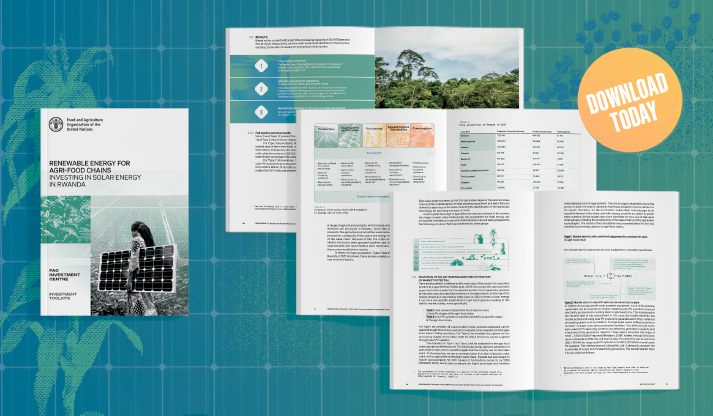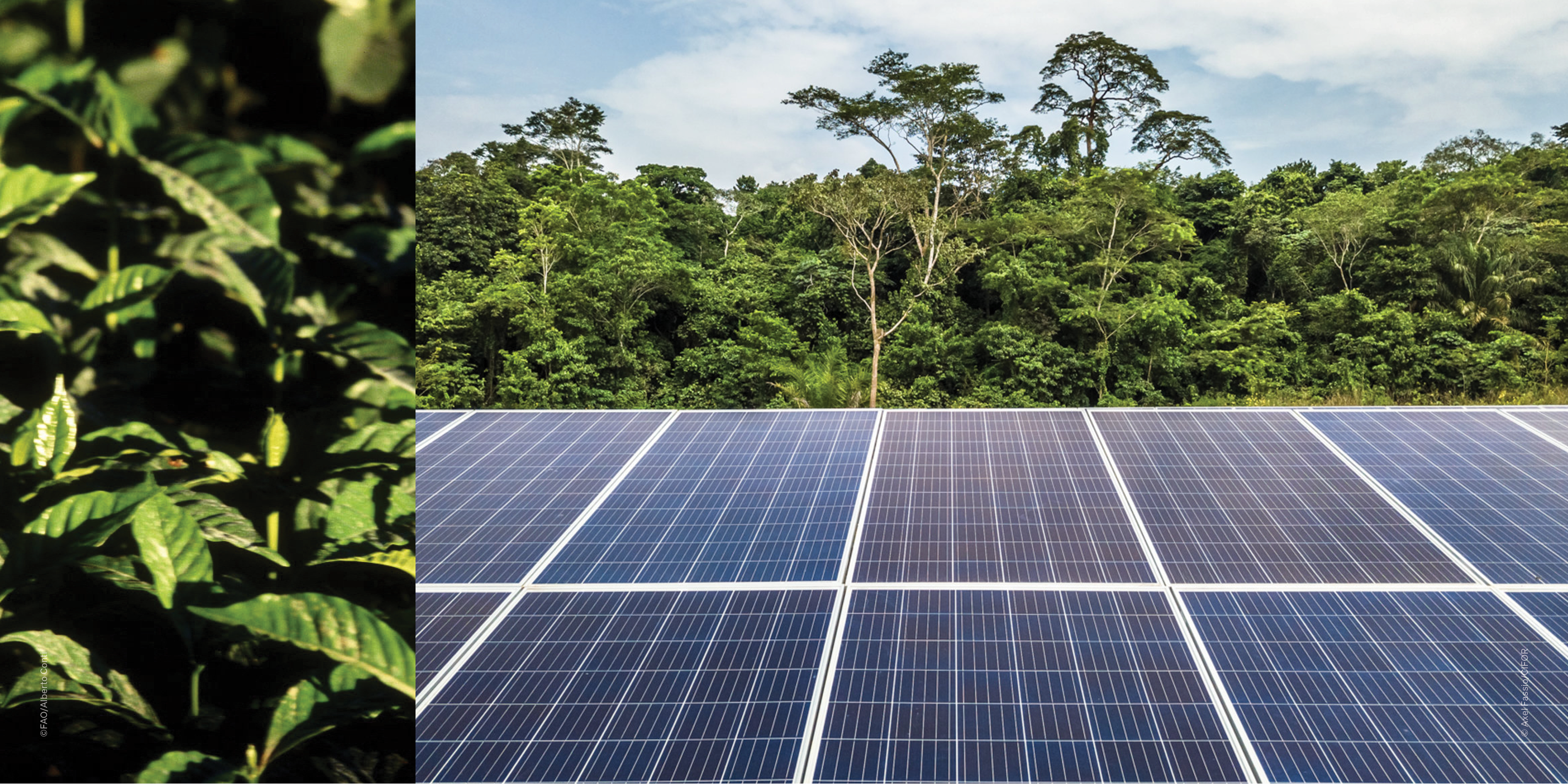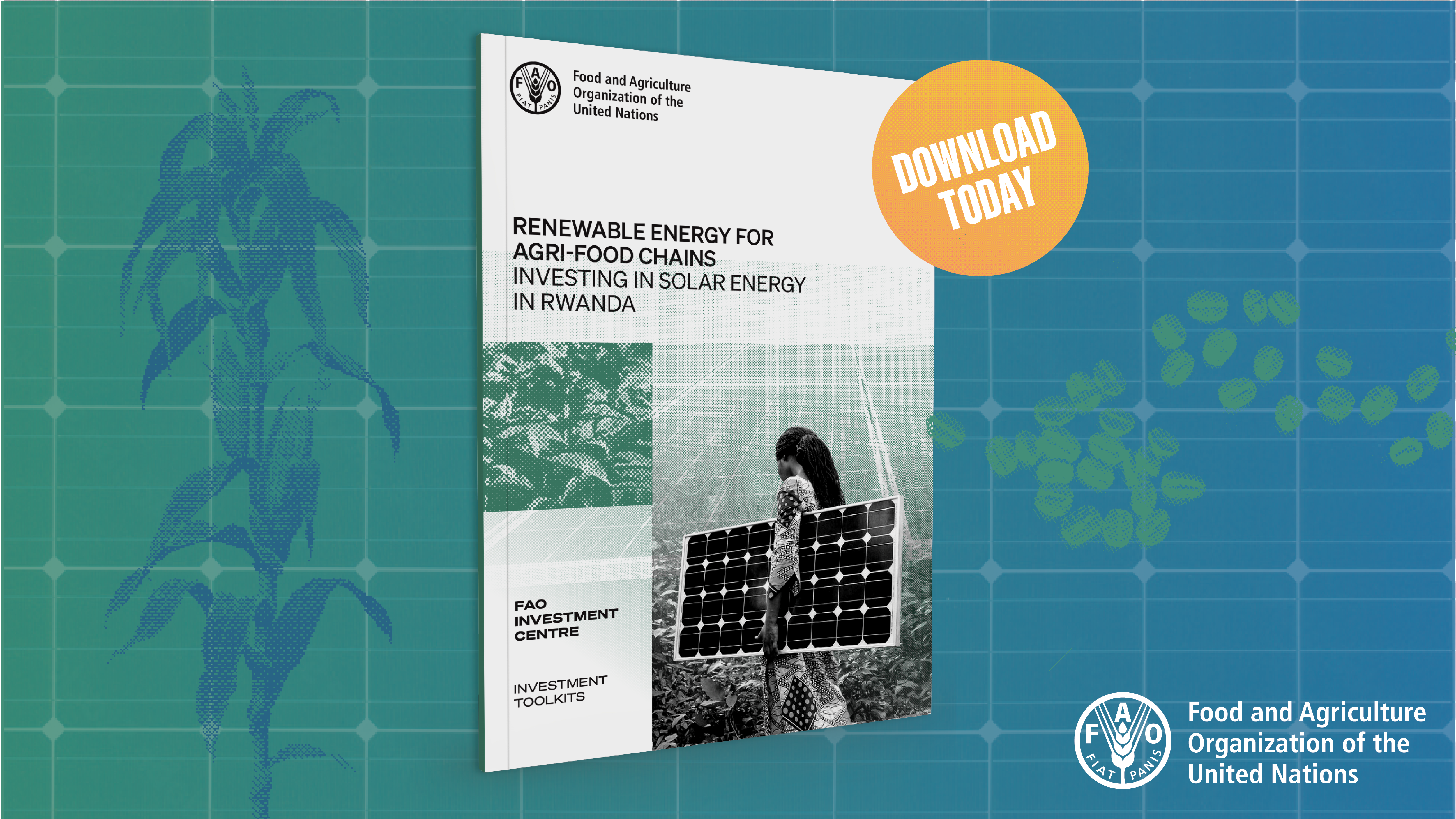From less food loss to better market access, renewable energy technologies are key

Modern, efficient agri-food systems depend on reliable access to energy, from farm to plate.
For many developing countries, limited access to energy can hinder the development of modern agro-processing industries, prevent farmers from producing higher value products and be a major cause of food losses.
Countries, like Rwanda, seeking to meet their growing food and energy needs while also shrinking their carbon footprints are increasingly looking to renewables like solar, wind, biomass and hydropower.
Investing in solar-powered cold storage, milling, drying and other technologies, for example, can help Rwanda transition to less fossil fuel-intensive agri-food systems.
FAO’s new report Renewable energy for agri-food chains: investing in solar energy in Rwanda looks at opportunities for the uptake of solar energy technologies in Rwanda’s agri-food sector.
The assessment breaks down the country’s agri-food chains into their main production and processing blocks. It then assesses the energy requirements at each stage of the chain, showing the potential market size and areas with the most promise.
A clear understanding of viable solar energy solutions specific for each stage of the agri-food system can help governments frame policies that can effectively promote the adoption of such technologies, said Alberta Mascaretti, FAO Investment Centre Service Chief.
“If there’s a good market for solar technology solutions, that also gives the private sector a big incentive to get involved, paving the way for a market-led scaling up of these technologies,” she said.

Agriculture, part of the solution
Agriculture consumes a vast amount of energy and emits about 20 to 25 percent of global greenhouse gases. But agriculture is also part of the solution.
Investing in renewable energy technologies can help minimize emissions along agri-food chains, improve productivity and competitiveness and make better use of the earth’s natural resources.
They can also help countries meet their international development commitments, including under the Nationally Determined Contributions (NDCs) and 2030 Sustainable Development Agenda.
Irini Maltsoglou, Natural Resources Officer – Deputy Energy Team Leader in FAO and one of the study’s co-authors, noted the importance of finding energy alternatives that are “evidence based, building on the specific requirements of the country and the country characteristics.”
“It is important to carry out a systematic assessment to understand what can work. With this analysis, we brought in a clear mapping of where solar energy could come in to solve specific issues along the agri-food chains,” she added.
FAO Sustainable Energy and Agriculture Expert Manas Puri, who, along with FAO Energy Technologies and Agriculture Expert Luis Rincon, made up the rest of the study team, pointed to the need for solutions that can work at country level.
“We often just have anecdotal evidence about solar technologies. But what works well in one country might not necessarily be a good fit for another,” he said. “Depending on the specific context of the country, even very simple interventions like motorbikes equipped with solar-powered cool boxes to get produce to markets on time can have a major positive impact on small-scale producers.”

Market potential
Identifying the market potential of a certain technology is one of the best ways to get the private sector and the government to focus on scaling up those technologies.
The study classified solar energy interventions into two groups. Type 1 includes decentralized solar equipment catering to a specific stage of the value chain. Type 2 represents opportunities in which electricity demand could be substituted by solar-based PV systems.
The assessment found that Type 1 solar energy interventions in the horticulture, milk and cereal value chains were especially promising. Estimates suggest that the potential market size for specific solar technologies in the horticulture chain, for example, could reach around USD 470 million, while the market size for small-scale milk chillers in Rwanda could reach USD 25 million.
Should these solar technologies be deployed, they could solve some of the structural constraints preventing the country’s agribusiness sector from modernizing. They could also create new jobs and business opportunities, especially for women and young people.
Finding the most appropriate solutions
The value of this methodology is that it can be applied to the broad range of renewable energy technologies available, not just solar, and to all agri-food chains.
Solar energy technologies should be screened against other renewable energy alternatives to find the most sustainable and cost-effective solutions for the agri-food chain in question, based on the context and needs of the country.
FAO remains committed to helping countries find and invest in the most appropriate alternative green energy solutions in order to improve their energy efficiency and transition to more sustainable agri-food systems.

